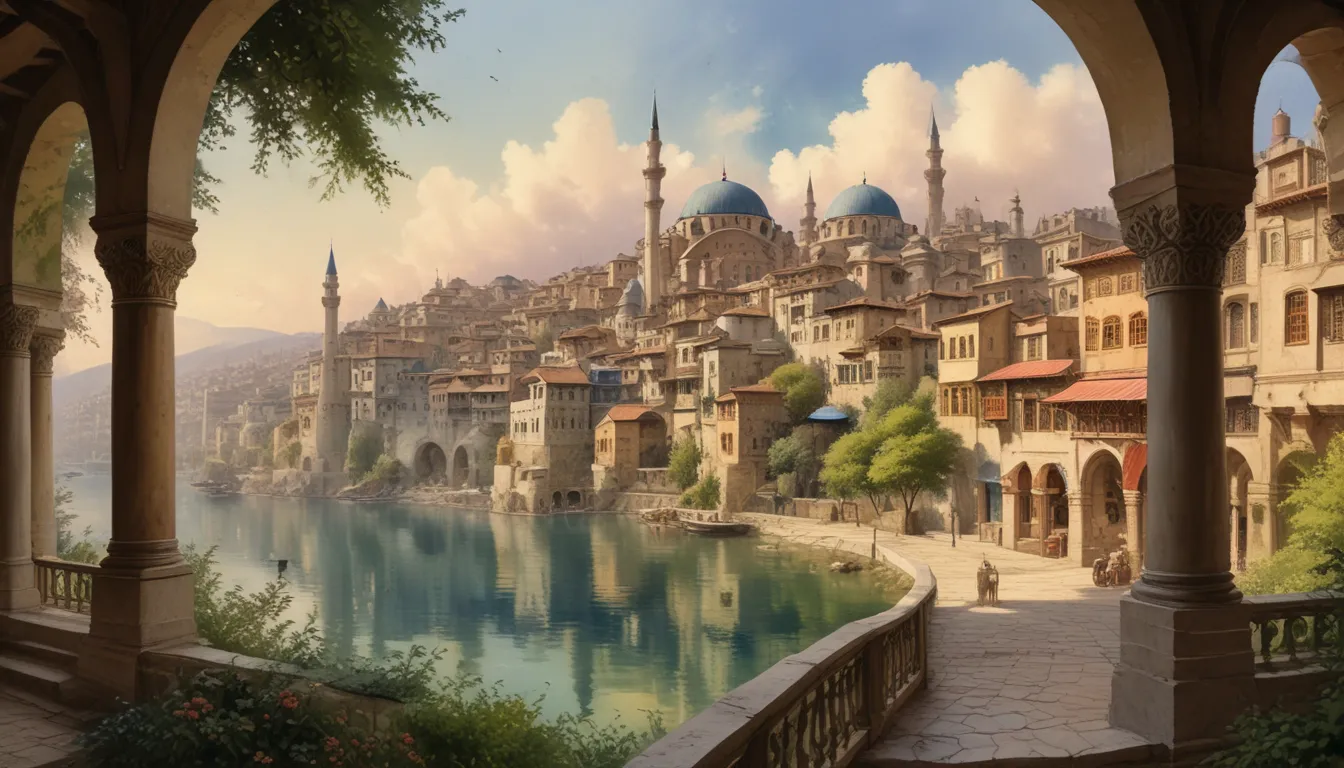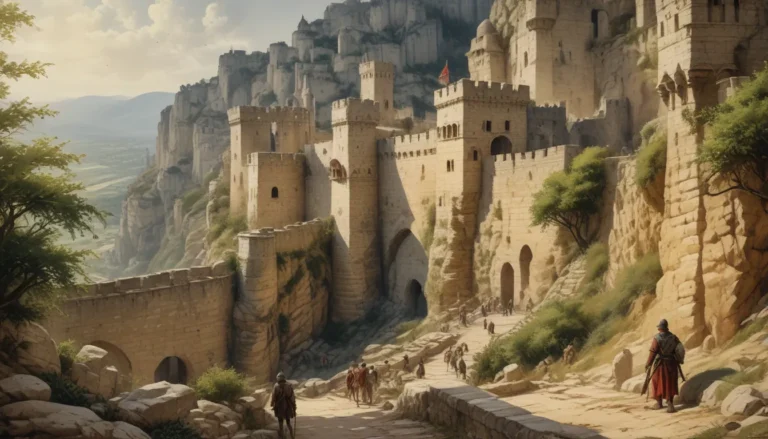The images in our articles are for illustrative purposes only and may not exactly match the content. They are intended to capture your interest and complement the text, not to replace it.
Welcome to a journey through the fascinating world of Ottoman architecture! With its distinct domes, minarets, and intricate tile work, Ottoman architecture tells a story of innovation, spirituality, and the pursuit of beauty that spans over six centuries. This unique architectural style, influenced by Byzantine, Persian, and Islamic designs, not only showcases the empire’s power and sophistication but also its ability to harmonize diverse artistic expressions. Join us as we unravel 25 captivating facts about these architectural marvels, offering insights into the genius behind some of the most iconic landmarks of the Ottoman Empire.
Understanding the Essence of Ottoman Architecture
Let’s delve into the essence of Ottoman architecture, a distinctive blend of Islamic, Persian, and Byzantine styles that emerged in the 14th century and thrived until the 20th century. This architectural style, renowned for its grand mosques, palaces, and baths, reflects the cultural richness and technological advancements of the Ottoman Empire.
- Ottoman architecture took root in Bursa and Edirne, cities that served as capitals of the Ottoman Empire before Istanbul.
- Influenced by Byzantine architecture, Islamic traditions, and Persian innovations, Ottoman architecture embodies a unique fusion of artistic elements.
Unraveling the Key Features of Ottoman Architecture
The key features of Ottoman architecture make it easily recognizable and deeply intriguing, showcasing a blend of innovation and tradition.
- Domes, often accompanied by smaller semi-domes, create vast, open interior spaces in Ottoman mosques.
- Slim minarets stand tall, announcing the call to prayer and adding to the distinctive silhouette of Ottoman buildings.
- Intricate Iznik tiles, with their bright colors and floral patterns, adorn the interiors of many Ottoman structures.
- Courtyards, surrounded by colonnaded peristyles, enhance the grandeur and functionality of Ottoman mosques.
Unveiling Notable Examples of Ottoman Architecture
Several architectural wonders exemplify the grandeur and intricacy of Ottoman design, each telling a unique story of conquest and creativity.
- Hagia Sophia, once a Byzantine church, now stands as a symbol of the fusion of Byzantine and Islamic architectural elements.
- The Süleymaniye Mosque, designed by the legendary architect Mimar Sinan, is renowned for its beauty and complexity.
- Topkapi Palace, a sprawling complex with lush gardens and richly decorated rooms, served as the administrative center and royal residence of the Ottoman Empire.
Celebrating Mimar Sinan: The Architect of the Empire
Mimar Sinan, the chief Ottoman architect for nearly five decades, left an indelible mark on Ottoman architecture, revolutionizing design and engineering solutions.
- Sinan’s innovative designs and engineering solutions elevated the aesthetic and functional aspects of Ottoman buildings.
- With over 300 structures to his name, including mosques, bridges, and schools, Sinan’s legacy continues to inspire architects and scholars.
Exploring Ottoman Architecture Beyond Mosques
The excellence of Ottoman architecture extends beyond mosques, encompassing a diverse range of structures that blend functionality with beauty.
- Bridges like the Mehmed Pasha Sokolovic Bridge in Bosnia and Herzegovina showcase Ottoman engineering prowess and aesthetic appeal.
- Caravanserais provided lodging and amenities for travelers, fostering commerce across the empire.
- Ottoman baths, or hamams, served as social centers, beautifully decorated with marble and tiles for a luxurious bathing experience.
Embracing Preservation and Influence of Ottoman Architecture
Ottoman architecture’s lasting legacy resonates through the preservation of historic structures and its influence on modern architectural designs worldwide.
- Designated as UNESCO World Heritage Sites, several Ottoman buildings are recognized for their cultural significance.
- Elements of Ottoman design continue to influence contemporary architecture, especially in regions once part of the Ottoman Empire.
- Preservation efforts ensure the survival of historic Ottoman buildings, preserving their legacy for future generations.
Ottoman Architecture in Popular Culture: Inspiring Creativity
Ottoman architecture has captivated audiences worldwide, inspiring art, literature, and film with its grandeur and elegance.
- Ottoman palaces and mosques often feature in historical dramas and documentaries, captivating audiences with their beauty.
- Novels set in the Ottoman Empire vividly describe its architectural wonders, transporting readers to a bygone era.
- Artists and photographers draw inspiration from the intricate details and grand scales of Ottoman structures, infusing their work with creativity and beauty.
The Global Influence of Ottoman Architecture: A Legacy Beyond Borders
The influence of Ottoman architecture extends far beyond Turkey, leaving a mark on regions as diverse as the Balkans, Middle East, and North Africa.
- Countries in the Balkans feature mosques and buildings with Ottoman architectural elements, a testament to the empire’s reach.
- Ottoman influence is evident in the design of mosques and public buildings in cities like Damascus and Cairo in the Middle East.
- North Africa bears the imprint of Ottoman rule, with distinct architectural styles in cities like Algiers and Tunis.
Embracing the Future of Ottoman Architecture: A Continuing Legacy
As we look to the future, the preservation and study of Ottoman architecture remain crucial for understanding the cultural and historical impact of the empire.
- Educational programs focused on Ottoman art and architecture nurture a new generation of scholars and preservationists.
- Modern technology, including 3D scanning and virtual reality, offers innovative ways to experience and study Ottoman architectural treasures.
A Final Glance at Ottoman Architectural Marvels: A Lasting Legacy
Ottoman architecture, with its grand mosques, elegant palaces, and intricate designs, stands as a testament to a rich cultural heritage that continues to inspire and awe.
As we celebrate the beauty and brilliance of Ottoman architecture, we invite you to explore and immerse yourself in the wonders of this timeless art form. Our commitment to delivering accurate and engaging content ensures that each fact shared with you is both fascinating and credible. Trust in our dedication to quality and authenticity as we uncover the captivating world of Ottoman architecture together.







